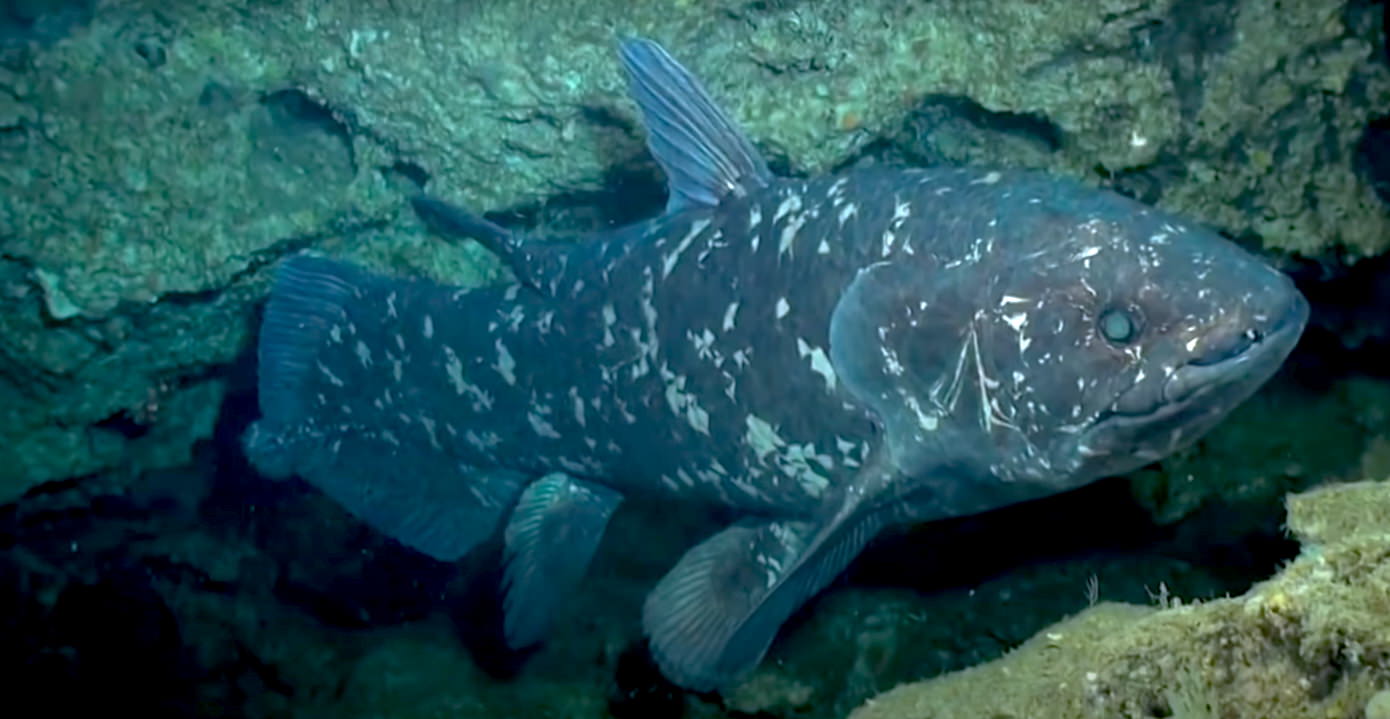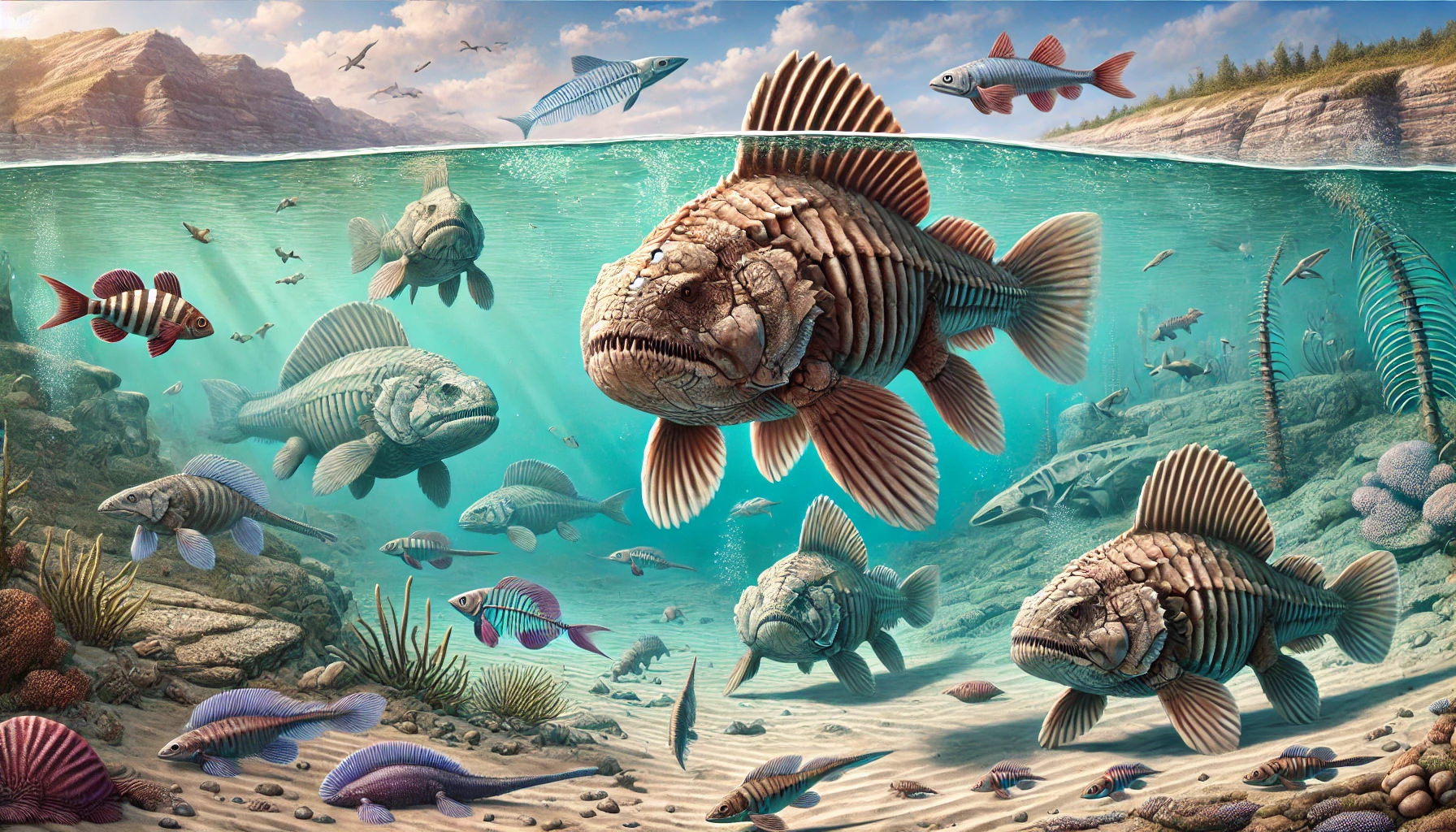Imagine discovering a creature that vanished from the planet over 65 million years ago — only to find it swimming quietly off the coast of Africa. This isn’t science fiction. It’s the true story of the coelacanth, one of the most fascinating animals on Earth.
- What Is a Coelacanth?
- 🐟 The Fish That Fooled Science
- More Than a Fossil: Modern Coelacanths
- Not Quite Dinosaurs, But Close
- Why Are Coelacanths So Special?
- Are Coelacanths in Danger?
- Fun Facts About the Coelacanth
- Final Thoughts
- FAQ
- What is a coelacanth?
- Is the coelacanth a living fossil?
- Where are coelacanths found?
- Why are coelacanths important to science?
- Are coelacanths endangered?
- No, the coelacanth is not a dinosaur.
- Why the confusion?
- TL;DR:
What Is a Coelacanth?
A coelacanth (pronounced SEE-luh-kanth) is a rare, deep-sea fish known for its strange, prehistoric appearance and fascinating evolutionary story. It belongs to a group of fish called lobe-finned fishes, which are considered crucial to understanding the evolution of land animals — including humans.
This fish is often called a “living fossil”, but don’t let that nickname fool you. Coelacanths are far from frozen in time. They’ve been slowly evolving for hundreds of millions of years — just on their own quiet terms, deep beneath the waves.
🐟 The Fish That Fooled Science
Here’s where the story gets exciting.
Coelacanths first appeared over 400 million years ago, long before the dinosaurs. Fossils show they thrived for hundreds of millions of years — until they disappeared from the fossil record about 66 million years ago, around the same time as the mass extinction that wiped out the dinosaurs.
So, scientists assumed they were extinct. For good.
That changed in 1938, when Marjorie Courtenay-Latimer, a South African museum curator, was sorting through the catch of a local fisherman near East London. Among the pile of fish, one stood out: blue, armoured, and unlike anything she had ever seen.
It was a coelacanth — alive and real.
That discovery sent shockwaves through the scientific world. It was like finding a living dinosaur.
More Than a Fossil: Modern Coelacanths
There are two known living species of coelacanth:
1. Latimeria chalumnae — the African coelacanth, found near the Comoros Islands, Madagascar, and East African coast.
2. Latimeria menadoensis — the Indonesian coelacanth, discovered in 1997 near Sulawesi.
These deep-sea fish typically live at depths of 100 to 500 meters, hiding in underwater caves and rocky slopes during the day and venturing out at night to feed.
They can grow up to 2 meters (6.5 feet) in length and weigh nearly 90 kilograms (200 pounds). Their thick scales are almost armor-like, and they have lobed fins that move like limbs — giving them an oddly graceful, “walking” motion in the water.
Not Quite Dinosaurs, But Close
Coelacanths are sometimes mistakenly called “dinofish,” but they actually predate the dinosaurs by over 150 million years. They are part of the Sarcopterygii, or lobe-finned fishes, a group that also includes lungfish — and ultimately, tetrapods, the ancestors of all land animals with backbones.
So while a coelacanth won’t be walking on land anytime soon, its ancient relatives paved the way for every frog, bird, dog, and human alive today.
Why Are Coelacanths So Special?
Aside from their jaw-dropping survival story, coelacanths are biologically fascinating:
• 🧠 They have a tiny brain, making up only about 1% of their cranial cavity. The rest is filled with fat.
• 🧬 Their genome is massive — and reveals ancient genes related to limb development in land animals.
• 🫁 They have a vestigial lung — a leftover from their ancestors who flirted with breathing air.
• 👁 Their eyes are adapted to the deep sea, with a tapetum lucidum that reflects light — like a cat’s.
Even their reproduction is unusual. Coelacanths give birth to live young (they are ovoviviparous), and the gestation period may last up to three years, one of the longest in the animal kingdom.
Are Coelacanths in Danger?
Yes. While they’ve survived multiple mass extinctions, coelacanths are now critically endangered due to accidental capture in deep-sea fishing nets and habitat disruption. Because they live deep underwater and reproduce slowly, even a small number of deaths can impact their survival.
Thankfully, awareness is growing. Several conservation efforts are now in place to protect coelacanth habitats and monitor populations without disturbing them.
Fun Facts About the Coelacanth
• They have eight fins — two dorsal, two pectoral, two pelvic, one anal, and one caudal (tail).
• They’re nocturnal and use their powerful sense of smell to find food like squid, cuttlefish, and small fish.
• They can perform a rare movement called “headstand feeding”, tilting vertically to grab prey.
Final Thoughts
The coelacanth isn’t just a fish. It’s a window into Earth’s deep past — and a reminder that nature still holds surprises in its deepest corners. As our understanding of evolution grows, the coelacanth stands as living proof that some stories don’t end when we think they do.
Whether you’re a marine biologist, a science enthusiast, or just someone who loves weird and wonderful creatures, the coelacanth is one fish worth knowing about.
FAQ
What is a coelacanth?
A coelacanth is a rare, deep-sea fish once thought extinct for 66 million years until rediscovered alive in 1938. It belongs to a group of lobe-finned fish closely related to early land animals.
Is the coelacanth a living fossil?
Yes. While not genetically frozen in time, it retains many ancient features and represents one of the oldest surviving fish lineages on Earth.
Where are coelacanths found?
They live deep in the Indian Ocean, especially near the Comoros Islands, South Africa, Madagascar, and Indonesia.
Why are coelacanths important to science?
Their anatomy and genetics offer insight into the evolution of tetrapods — the first animals to walk on land.
Are coelacanths endangered?
Yes, they are critically endangered due to overfishing and habitat threats, but protected in many regions.
No, the coelacanth is not a dinosaur.
While it might look ancient and unusual, the coelacanth is a type of fish, not a reptile — and certainly not part of the dinosaur lineage.
Here’s a quick breakdown to clarify:
🐟 Coelacanth:
• A lobe-finned fish (class: Sarcopterygii)
• First appeared over 400 million years ago (way before dinosaurs)
• Lives in the ocean, breathes with gills
• Related more closely to amphibians and mammals (including humans!) than to modern fish
🦕 Dinosaurs:
• Land-dwelling reptiles (clade: Dinosauria)
• Lived during the Mesozoic Era (about 230–65 million years ago)
• Included species like T. rex, Triceratops, and Velociraptor
• Evolved into birds, not fish
Why the confusion?
• The coelacanth was thought to be extinct since the time of the dinosaurs (about 66 million years ago).
• It was rediscovered alive in 1938, earning it the nickname “living fossil.”
• Its odd, prehistoric appearance makes it look like a creature from the dinosaur era — and it is, but it’s not a dinosaur.
TL;DR:
The coelacanth is an ancient fish, not a dinosaur — but it’s even older than the dinosaurs and just as fascinating.
# living fossil fish
# prehistoric sea creatures
# coelacanth discovery 1938
# ancient deep-sea fish
# Latimeria chalumnae
# extinct fish rediscovered
# marine biology facts
# fish with limb-like fins
# oldest fish species alive
# evolution of land animals
# strange deep sea animals








